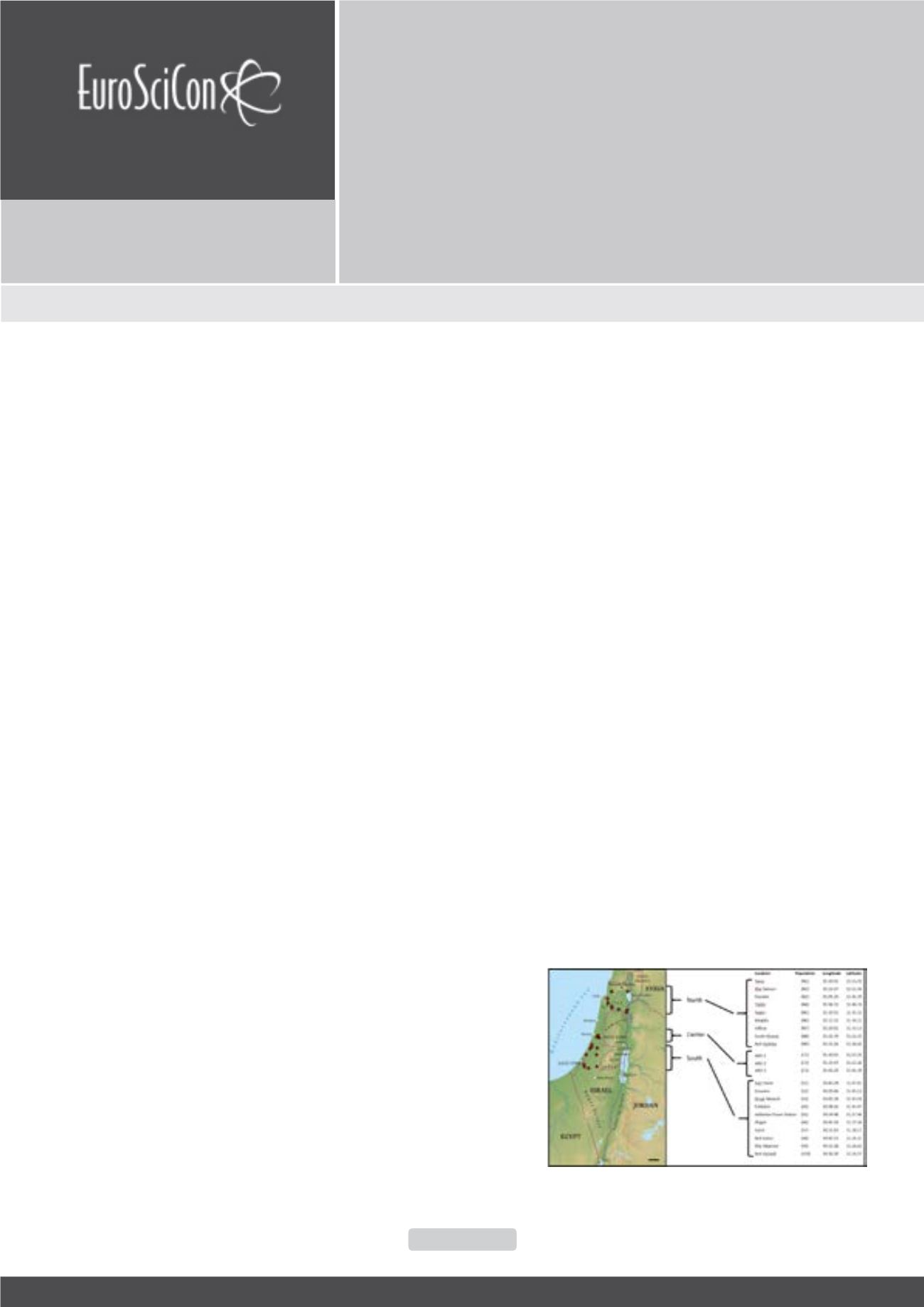

Pharmacognosy 2018
American Journal of Ethnomedicine
ISSN: 2348-9502
Page 46
April 16-17, 2018
Amsterdam, Netherlands
6
th
Edition of International Conference on
Pharmacognosy and
Medicinal Plants
M
ilk thistle (
Silybummarianum
) is a ruderal, nitrophilous plant,
native to the Mediterranean basin with natural adjacent-
desert populations. It is usually utilized for its hepatoprotective
activity due to its high content of silymarin; a complex of seven
flavonolignans: silybin A, silybin B, isosilybin A, isosilybin B,
silychristin, isosilychristin, silydianin, and one flavonoid, taxifolin.
In Israel, it grows in almost all regions, from the upper Galilee in
the north to the edge of the Negev desert in the south, including
the Jordan Valley and around the Dead Sea. The aim of the
current study was to analyze
S. marianum
populations from
three Mediterranean regions; in northern, central and southern
Israel, adjacent to the Negev desert, for silymarin content and
composition, in order to evaluate their potential significance as
sources for medicinal purposes. Seeds collected from all regions
were planted in a screen-house under Mediterranean conditions
in central Israel. The resulting F1 progeny was planted in an
open field and their seeds were evaluated for silymarin content
and composition. Silymarin concentration and content per plant
highly varied among all populations, ranging from21 to 36 (gr/Kg)
and 3.3 to 12.3 (gr), respectively. In general, the highest silymarin
concentration was measured for plants originated from central
populations and the highest silymarin content per plant was
measured for the central and northern populations. Analysis of
silymarin composition revealed unique chemotypes in all regions,
and particularly in central Israel, combining significantly elevated
levels of the most potent compounds according to Polyak et al.
(2010; PNAS 107:5995-5999) of taxifolin, isosilybin A, silybin A,
silybinBandamixtureof
silybinAandsilybinB.Weconcluded that
the high variation in climatic conditions across Israel contributed
to the appearance of unique chemotypes, having great potential
for future varieties cultivated for silymarin.
Recent Publications
1. Degani A V Dudai, N Bechar A and Vaknin Y (2016) Shade
effects on leaf production and essential oil content and
composition of the novel herb
Eucalyptus citriodora
hook.
Journal of Essential Oil Bearing Plants 19(2): 410–420.
2. Cohen-Zinder, H Leibovitz, Y Vaknin, G Sagi, A Shabtay,
et al. (2015) Effect of feeding
Moringa oleifera
Lam.
silage to lactating cows on digestibility and efficiency of
milk production. Animal Feed Science and Technology
211:75–83.
3. Vaknin Y Dudai, NMurkhovsky, L Gelfandbein, L Fischer R
and Degani A (2009) Effects of pot size on leaf production
and essential oil content and composition of
Eucalyptus
citriodora
hook. (Lemon-scented gum). Journal of Herbs
Spices and Medicinal Plants. 15:1–13.
4. Steinitz B, Tabib Y, Gaba V, Gefen T, Vaknin Y (2008)
Vegetative micro-cloning sustaining biodiversity of
threatened Moringa species.
In Vitro
Cell. Dev.Biol.-Plant
45:65–71.
5. Vaknin Y Hadas, R Schafferman, D Murkhovsky L and
Bashan N (2007) The potential of milk thistle (
Silybum
marianum
L.), an Israeli native, as a source of edible
sprouts rich in antioxidants. International Journal of Food
Sciences and Nutrition 20:1–8.
Analysis of silymarin content and composition of the
Mediterranean milk thistle (Silybum marianum) in Israel reveals
unique chemotypes as potential varieties for medicinal purposes
Yiftach Vaknin
ARO Volcani Center, Israel
Yiftach Vaknin, Am J Ethnomed 2018, Volume 5
DOI: 10.21767/2348-9502-C1-005
















